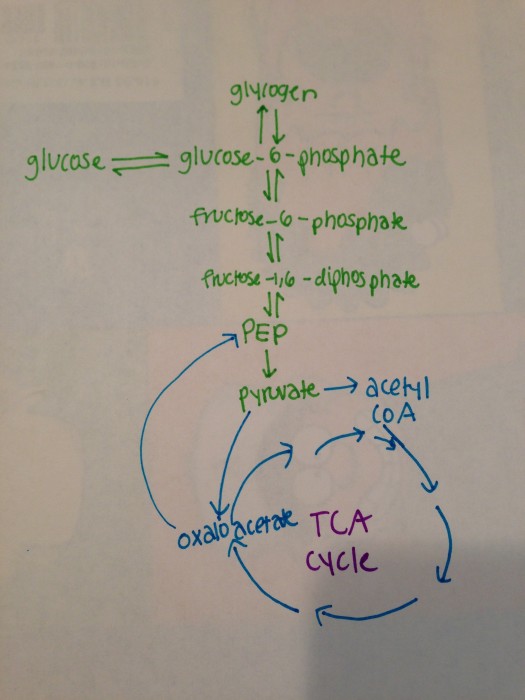Hello! I’m on the other side of exams now and am enjoying some downtime. One of the classes I took this quarter was Exercise Physiology, and since I know more about it now than I ever will, I thought I’d do a couple of posts that might be relevant to your fitness goals!
Today’s topic is fasted cardio. I will go into the science both at a deeper and at a more surface level, so hopefully everyone will get a take away from it!
Fasted cardio is all the rage right now, especially for those training for some type of figure competition, or those trying to lose body fat. The theory behind it is that because your body has no carbohydrates to burn, it will use fat as fuel. Normally, glucose (carb) is stored in the liver in the form of glycogen, which can be broken down back into glucose for energy. Glycogen is what keeps you going on those long runs, until it is depleted (when you feel like you have hit a wall). In the fasted state, your glycogen is already depleted.
So the big question—in the fasted state, do you use more fat as fuel? Yes!
However…at what cost? I’m going to go into the biochemistry a little bit here—if that’s not your thing, feel free to skip it and just look out for the bolded sentences; those are the major takeaways!
Below is a depiction of glycolysis (green) and the TCA cycle. These are how cells create energy. Energy and energy equivalents are given off in various steps as a result of the chemical reactions.
When carbohydrate is broken down for energy, it goes to pyruvate. Pyruvate can then feed into the TCA cycle for two directions: through acetyl CoA or through oxaloacetate. Therefore, if some TCA intermediate runs out, the TCA cycle will continue. However, fats can only enter the TCA cycle through acetyl CoA. Some of you may have heard the phrase “fats burn in the fire of carbohydrate.” This is because carbohydrates feed the cycle from both sides, so even if fats are being burned, carbohydrates keep the cycle going if something runs out.
So what does your body do? It uses protein as fuel. If you do fasted cardio, you will break down muscle. Amino acids can perform gluconeogenesis, meaning that they can form glucose. Different amino acids enter at different places, but certain amino acids are glucogenic, meaning they enter the cycle at a place that will allow glucose to be made. After entering the cycle, they go from oxaloacetate, and then to PEP. From there, they continue on to make glucose.
What’s the takeaway? With fasted cardio, you do burn more fat, but it comes at the cost of breaking down muscle. Fasted cardio can have negative effects for weight loss because if you decrease your muscle mass, you will lower your metabolic rate (the rate at which you burn energy/calories) because muscles burn more energy than other body mass. Even 100 calories of carbohydrate prior to your workout can prevent this muscle breakdown. It may be beneficial to occasionally do fasted cardio, but the muscle breakdown/fat loss tradeoff is something you have to determine for yourself depending on your goals! Personally I generally don’t do fasted cardio because my body feels better with some fuel, and my stomach doesn’t like running without anything. If you simply aren’t hungry in the morning, there are plenty of liquid calories you can consume to fuel your workout!
Fasted cardio: would you or wouldn’t you do it?


